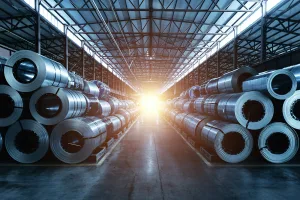Forging Success: The Impact of Industry Trends on Steel Prices Unveiled

How do industry trends affect steel prices?
In the ever-evolving landscape of global industries, few commodities hold as much sway as steel. From towering skyscrapers to intricate machinery, steel is the backbone of modern civilization. However, the price of this essential metal is far from static, fluctuating in response to a myriad of industry trends. Understanding these trends is not just a matter of economic curiosity but a crucial factor for businesses and consumers alike.
1. Unraveling the Fabric of Demand and Supply
At the heart of steel price fluctuations lies the delicate balance between demand and supply. Industry trends, ranging from geopolitical shifts to technological advancements, play a pivotal role in shaping this equilibrium. For instance, the rise of renewable energy initiatives fuels demand for steel in wind turbines and solar panels, while infrastructure projects spurred by government stimulus packages can lead to surges in steel consumption.
2. Navigating the Terrain of Global Trade Dynamics
The steel market is inherently global, with supply chains spanning continents. Consequently, trade policies and geopolitical tensions exert a profound influence on steel prices. Tariffs, trade agreements, and sanctions can disrupt supply chains, leading to price volatility. Furthermore, currency fluctuations and transportation costs add layers of complexity to the equation, amplifying the impact of industry trends on steel prices.
3. Innovations Redefining the Metallurgical Landscape
Innovation is the lifeblood of the steel industry, driving efficiency gains and cost reductions. Advancements in metallurgical processes, such as electric arc furnaces and continuous casting technologies, have revolutionized steel production, altering supply dynamics and cost structures. Moreover, the emergence of lightweight materials and composites presents both opportunities and challenges for traditional steel manufacturers, influencing price trends in the long term.
4. Sustainability Imperatives and Environmental Pressures
In an era defined by climate change awareness and sustainability imperatives, environmental considerations are increasingly shaping industry trends. Steelmakers face mounting pressure to reduce carbon emissions and adopt eco-friendly practices, which can entail significant investments in cleaner technologies. These sustainability initiatives not only impact production costs but also influence consumer preferences, driving demand for greener steel products.
5. Forecasting the Future: Navigating Uncertainty
Predicting steel price movements amidst the tumult of industry trends is akin to navigating through a stormy sea. While historical data and econometric models offer valuable insights, the future remains inherently uncertain. As such, businesses must adopt agile strategies, leveraging market intelligence and scenario planning to anticipate and adapt to changing dynamics.
In conclusion, the interplay between industry trends and steel prices is a multifaceted phenomenon, encompassing demand-supply dynamics, global trade intricacies, technological innovations, sustainability imperatives, and forecasting challenges. By staying attuned to these trends and their implications, stakeholders can navigate the turbulent waters of the steel market with resilience and foresight, forging a path towards sustainable success in an ever-changing world.
By addressing these key themes and providing actionable insights, this article aims to unravel the complexities of steel price dynamics and empower readers to make informed decisions in an increasingly volatile market landscape.Remember, the future is dynamic, so staying informed and adaptable is key to success in navigating industry trends and their impact on steel prices.



